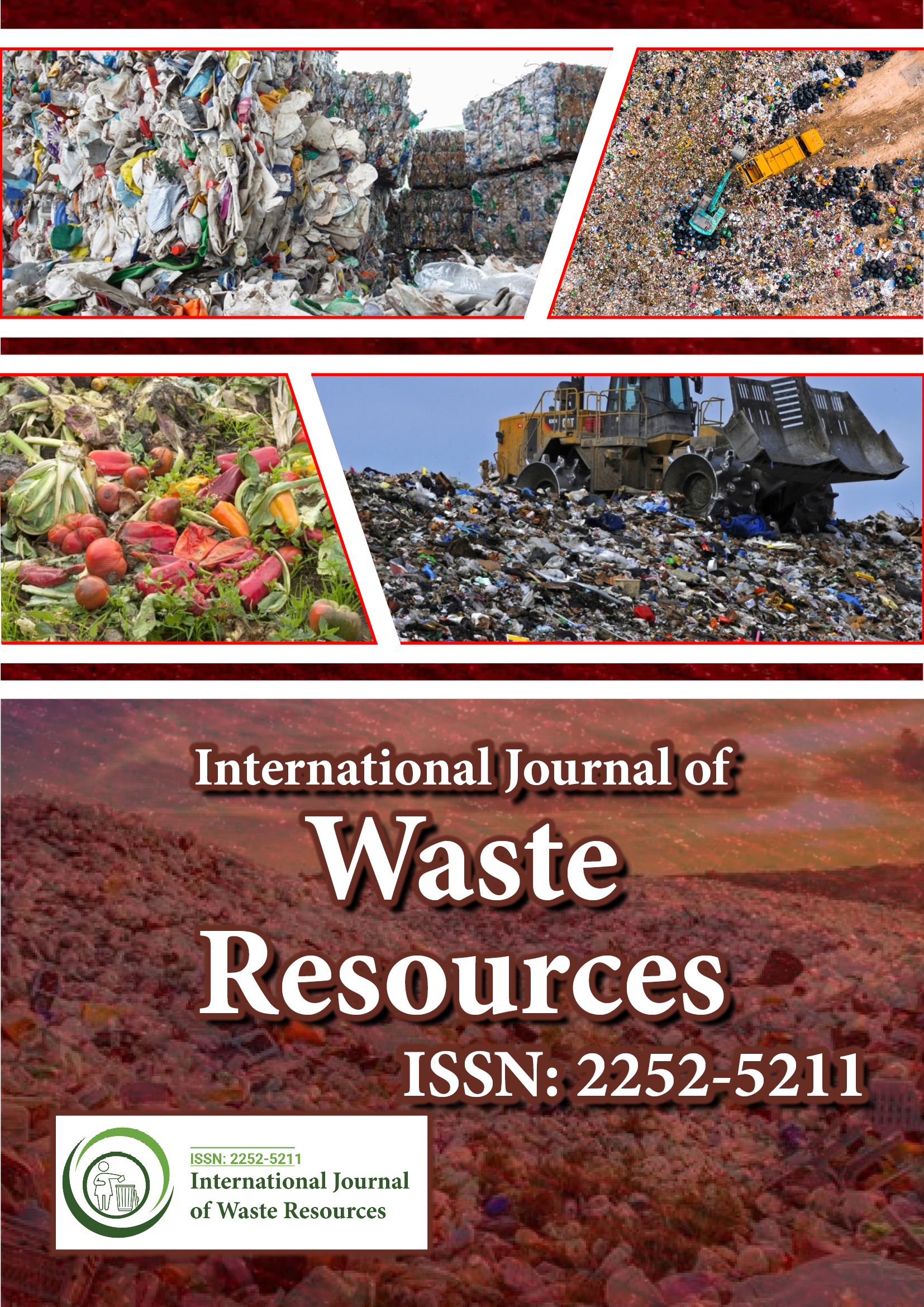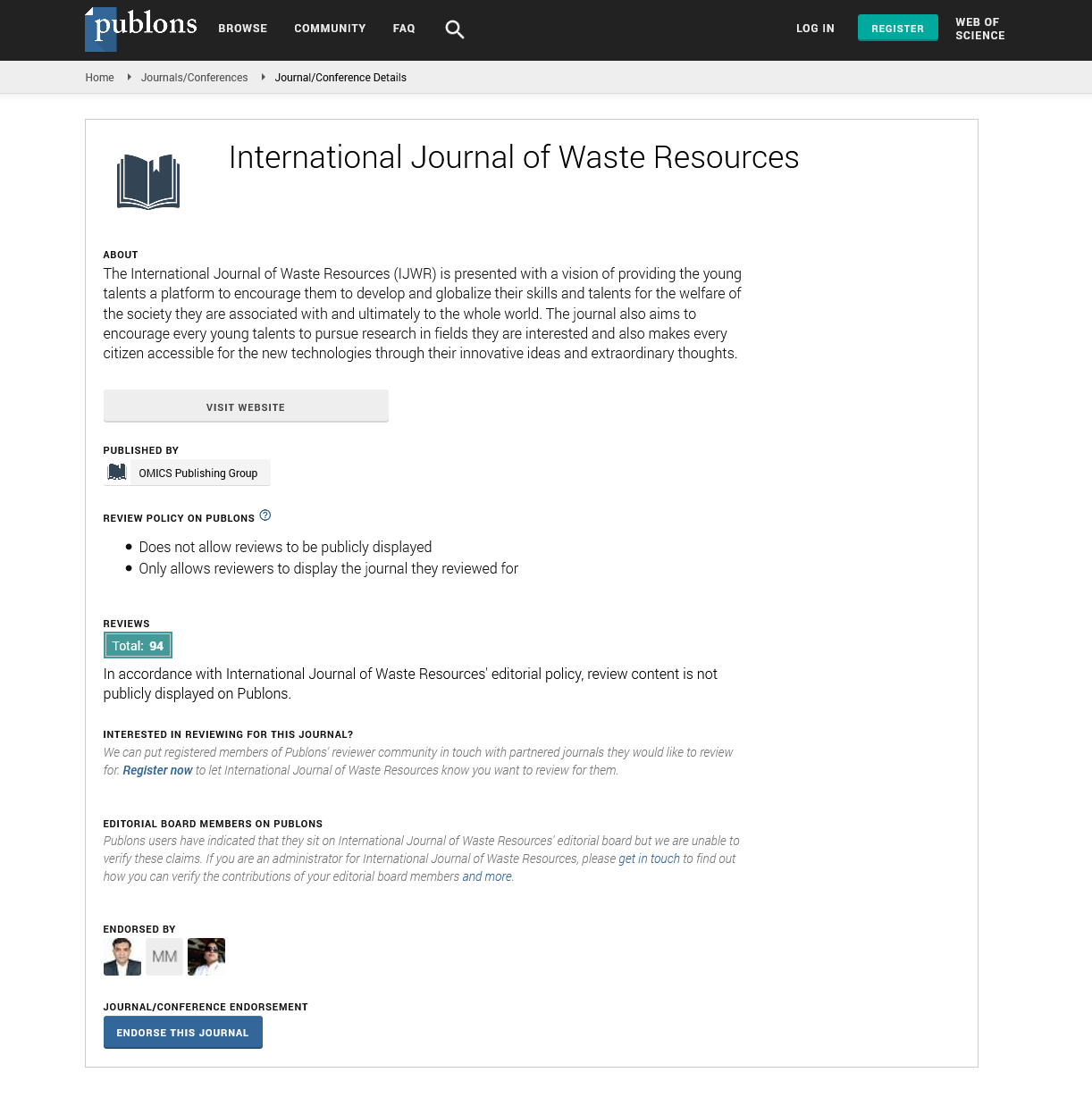PMC/PubMed Indexed Articles
Indexed In
- Open J Gate
- The Global Impact Factor (GIF)
- Open Archive Initiative
- VieSearch
- International Society of Universal Research in Sciences
- China National Knowledge Infrastructure (CNKI)
- CiteFactor
- Scimago
- Ulrich's Periodicals Directory
- Electronic Journals Library
- RefSeek
- Directory of Research Journal Indexing (DRJI)
- Hamdard University
- EBSCO A-Z
- Publons
- Google Scholar
Useful Links
Share This Page
Journal Flyer

Open Access Journals
- Agri and Aquaculture
- Biochemistry
- Bioinformatics & Systems Biology
- Business & Management
- Chemistry
- Clinical Sciences
- Engineering
- Food & Nutrition
- General Science
- Genetics & Molecular Biology
- Immunology & Microbiology
- Medical Sciences
- Neuroscience & Psychology
- Nursing & Health Care
- Pharmaceutical Sciences
Short Communication - (2022) Volume 12, Issue 8
Hydrosilation of Solid Waste Management and Stabilization Process in Organic Materials
Wilbard Florence*Received: 18-Jul-2022, Manuscript No. IJWR-22-18155; Editor assigned: 21-Jul-2022, Pre QC No. IJWR-22-18155(PQ); Reviewed: 11-Aug-2022, QC No. IJWR-22-18155; Revised: 18-Aug-2022, Manuscript No. IJWR-22-18155(R); Published: 25-Aug-2022, DOI: 10.35248/2252-5211.22.12.486
Description
The primarily included solid waste collections are land disposal, incineration and industrial wastes. The landfills are often categorized as sanitary, municipal, construction and demolition, or industrial waste sites. The biodegradable wastes can be processed by composting, vermicomposting, anaerobic digestion or any other biological processing for waste stabilization.
The organic material is hydrolyzed by facultative bacteria into simpler organics which are water soluble and are grouped to their material, plastic, paper, glass, metal, and organic waste. More than half of the waste is currently openly dumped, and a trajectory of waste growth has a vast impact on environment, health, and prosperity [1].
It can be separated by biodegradable waste or by inert and nonbiodegradable waste. The category of the waste's origin, such as industrial, domestic, commercial, institutional, or construction and demolition, may also be relevant.
Material-based waste categories include plastic, paper, glass, metal, and organic garbage. Hazard potential, such as that of radioactive, flammable, infectious, poisonous, or non-toxic wastes, may also be used to categories items [2]. Many of the nonbiodegradable solid waste materials are known to cause their considerable environmental hazards when they are released into land, water and atmosphere. Whether industrial, home, commercial, institutional, or from building and demolition, categories may also apply to where the garbage originated.
Techniques for Management of Solid Waste:
1. Open Burning of Solid Waste
2. Process of sea dumping
3. Sanitary landfills for solid waste
4. Incineration process
5. Plow-in disposal at a landfill
Placing of solid waste in sanitary landfills is easy, tidy, and efficient. In this process, the layers are leveled, compacted, and covered with dirt after being squeezed with some mechanical equipment. Collected waste from residential and other areas shall be transferred to community bin by hand-driven carts or other small vehicles [3].
Polythene and its related compounds are most commonly found in the solid waste materials. Combustible waste is suited for incineration. This technique involves expensive construction and operation expenditures [4]. In densely populated areas without landfills, this strategy would be appropriate. It can be used to lower the amount of solid waste that needs to be dumped.
The composting has been developed in nations and it is comparable to hygienic landfilling. The process that separates and composts organic material can be decomposed. It yields final products which improves the soil quality and can serve as building block for fertilizers. The high costs of verification or extraction processes may be acceptable in light of potential use or volume reduction of material being generated.
The nonhazardous solid waste from a community requires collection and transport to a processing or disposal site known as refuse or municipal solid waste [5]. The plowing of waste into fields is not in frequent methods but is generally not in friendly environment. The waste minimization initiatives and recycling schemes are only capable of managing the process of residual waste.
Conclusion
The waste management contributes most of the global warming because the emission of CH4 from organic waste degradation in landfill has high potential contribution to this impact. Recycling is the most preferred option in the base scenario. The hog feeding is not a common method of disposal. Compost is made from biodegradable trash, and recycling is an option when it is practical. The proper techniques can be used to dispose of hazardous garbage.
REFERENCES
- Abdel-Shafy HI, Mansour MS. Solid waste issue: Sources, composition, disposal, recycling, and valorization. Egypt J Pet. 2018;27(4):1275-1290.
- Ayilara MS, Olanrewaju OS, Babalola OO, Odeyemi O. Waste management through composting: Challenges and potentials. Sustainability. 2020;12(11):4456.
- Hoornweg D, Thomas L. What a waste: solid waste management in Asia. The World Bank; 1999.
- Das AK, Islam MN, Billah MM, Sarker A. COVID-19 pandemic and healthcare solid waste management strategy–A mini-review. Sci. Total Environ. 2021;778:146220.
[Cross Ref] [Google Scholar] [Pub Med]
- Zand AD, Heir AV. Emanating challenges in urban and healthcare waste management in Isfahan, Iran after the outbreak of COVID-19. Environmental Technology. 2021 Jan 15;42(2):329-336.
[Cross Ref] [Google Scholar] [Pub Med]
Citation: Florence W (2022) Hydrosilation of Solid Waste Management and Stabilization Process in Organic Materials. Int J Waste Resour. 12:486.
Copyright: © 2022 Florence W. This is an open-access article distributed under the terms of the Creative Commons Attribution License, which permits unrestricted use, distribution, and reproduction in any medium, provided the original author and source are credited.

